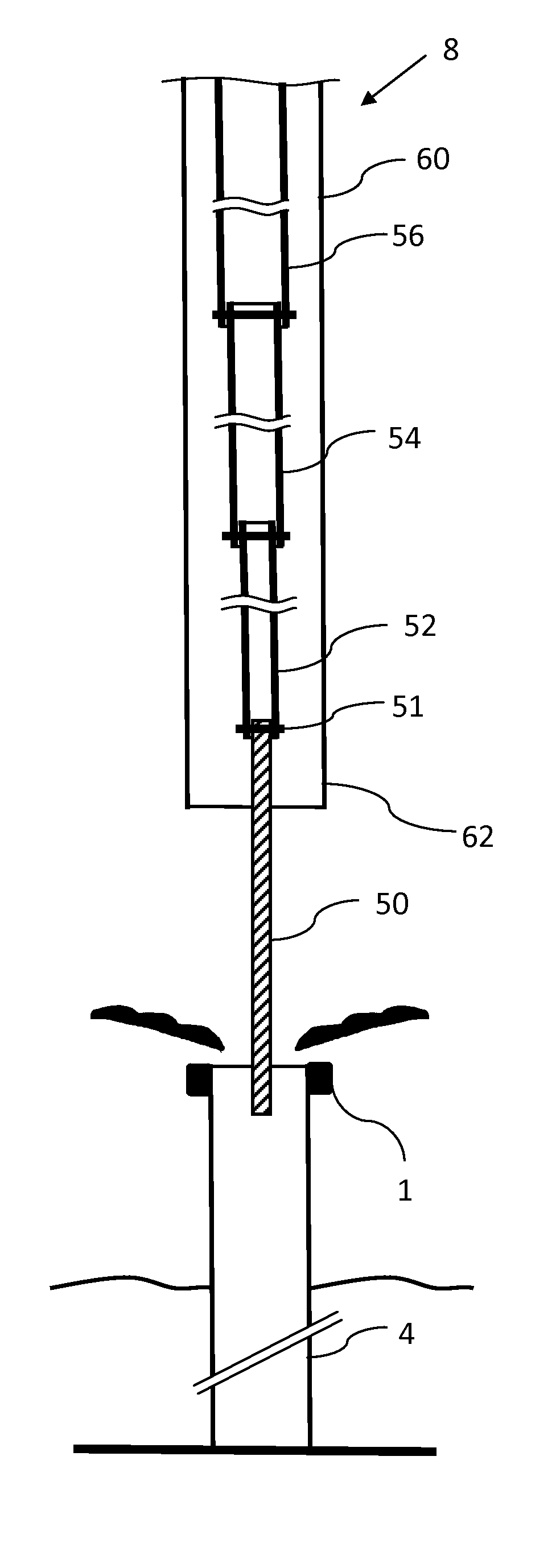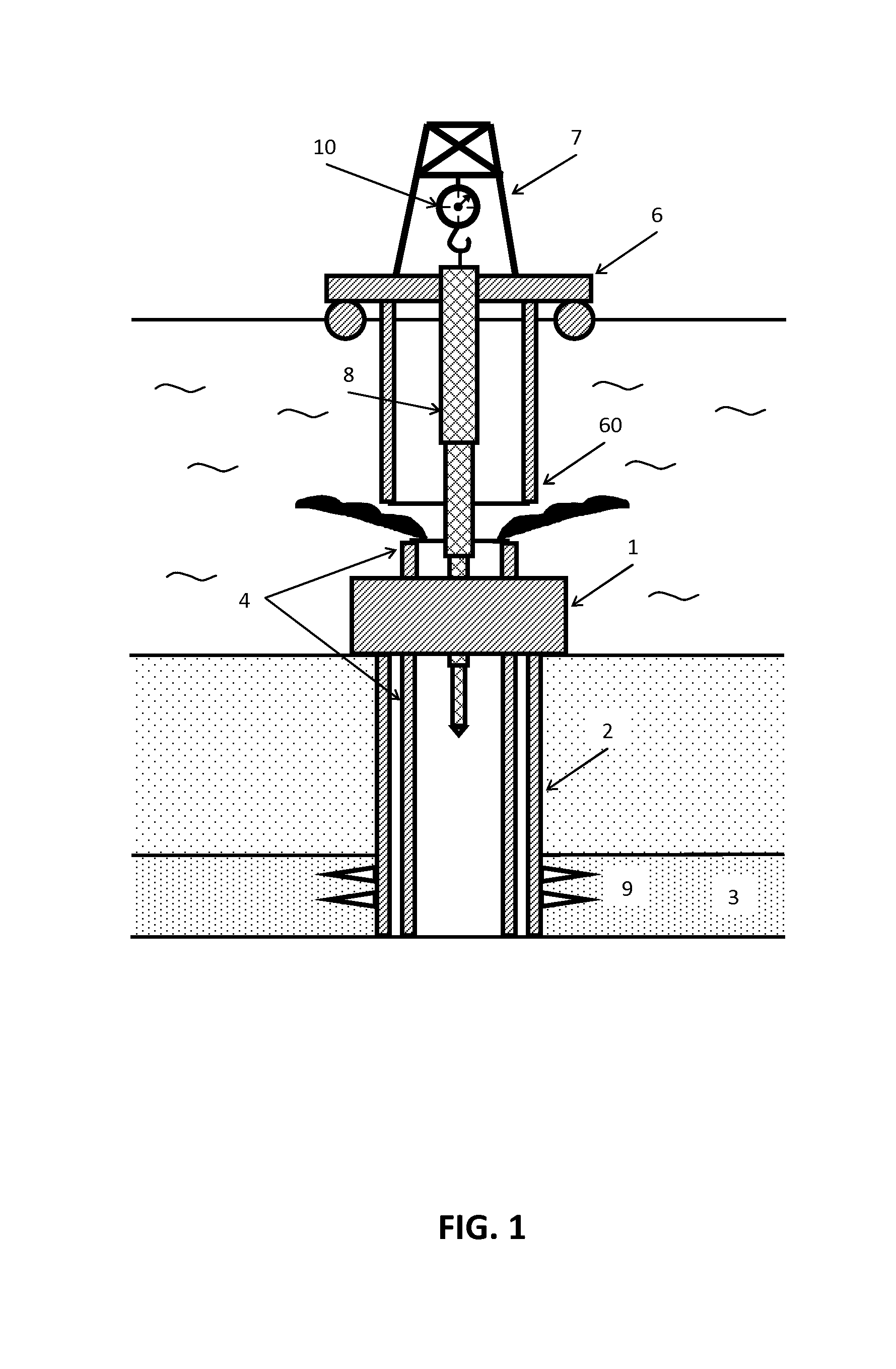Methods and devices for restoring control and resuming production at an offshore oil well following an uncontrolled fluid release after an explosion
a technology of oil well and fluid release, which is applied in the direction of drilling pipes, drilling/well accessories, sealing/packing, etc., can solve the problems of uncontrolled fountain, human casualties, environmental pollution, etc., and achieve the effect of fluid releas
- Summary
- Abstract
- Description
- Claims
- Application Information
AI Technical Summary
Benefits of technology
Problems solved by technology
Method used
Image
Examples
first embodiment
[0052]FIGS. 2a through 2d illustrate an example of the method of the invention according to the Shown in FIG. 2a is the beginning of the process of lowering the flow restricting assembly 8 into the well pipe 4 through the lower end 62 of the riser 60 positioned above and aligned with the BOP 1. The flow restricting assembly 8 in this case consists of the first solid insert 50 attached to a higher insert pipe 52, which in turn is attached to a higher and larger insert pipe 54 and finally the assembly 8 includes the upper insert pipe 56. Each successive pipe 52, 54, and 56 may be made to accept the adjacent lower insert inside thereof. The attachments 51 between successive flow restricting inserts may be made to allow hanging of the lower insert at the end of the higher insert respectively. One example of such attachment is shown in FIGS. 4a and 4b, while another example is shown in FIGS. 5a and 5b which are discussed in more detail below.
[0053]Upon reaching the bottom of the well, t...
second embodiment
[0057]FIGS. 3a and 3b show another disposition of the oil well according to the invention, in which individual flow restricting inserts are configured to be engaged and attached to each other allowing the entire assembly to collapse or extend axially like a “spy glass”. One such engagement design between adjacent inserts of the flow restricting assembly is shown in FIGS. 5a and 5b, where each respective portion of flow restricting inserts 50 and 52 has a flange 55 and 59. The flanges 55 and 59 may be configured to overlap each other such that during lowering of the flow restricting assembly 8 into the oil well pipe 4, the lower insert is supported by the adjacent higher insert (as seen in FIG. 5a). Upon reaching the bottom of the well, the lower insert 50 may stop and disengage from the next insert 52, which can continue its descent, shown with arrows in FIG. 5b. Other possible designs of the ends of respective inserts 50 and 52 may include a bayonet-type design or other fittings th...
third embodiment
[0062]FIG. 7 illustrates the method of the invention in which a central portion of the flow restricting assembly 8 is made as a telescopic permanent assembly of solid rods of increasing diameters 50, 52, and 54, while the outer portion is made using one or more sliding flow restricting rods 56. In embodiments, once the control over the oil well is regained, the central telescopic rod assembly may be lifted to adjust the flow of oil from the well or removed entirely so that oil production may proceed through the outer insert 56.
PUM
 Login to View More
Login to View More Abstract
Description
Claims
Application Information
 Login to View More
Login to View More - R&D
- Intellectual Property
- Life Sciences
- Materials
- Tech Scout
- Unparalleled Data Quality
- Higher Quality Content
- 60% Fewer Hallucinations
Browse by: Latest US Patents, China's latest patents, Technical Efficacy Thesaurus, Application Domain, Technology Topic, Popular Technical Reports.
© 2025 PatSnap. All rights reserved.Legal|Privacy policy|Modern Slavery Act Transparency Statement|Sitemap|About US| Contact US: help@patsnap.com



